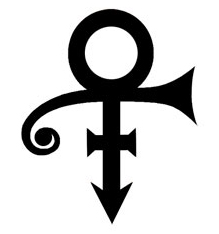One of the more interesting aspects of observing trademark disputes is the sometimes thorny issues that arise regarding the use of the family name (surname) as a trademark and the bad feelings that tend to ensue from one member of the family trying to exclude use(s) by other family members. Equally as fascinating is the public's reaction to such action(s) and the often misunderstood nature of trademarks and trademark usage, esp. of surnames. Take for example the most recent case involving a well-known surname - the surviving family of former NASCAR champion Dale Earnhardt (Sr.). Dale Earnhardt's widow (Teresa) is the CEO of Dale Earnhardt, Inc. (aka "DEI"), formerly a motor racing company, and as of now the owner of all name, image, likeness, and general trademarks (registered and unregistered) of Dale Earnhardt. This includes six federal registrations for variants of "DALE EARNHARDT", "E", and "THE DALE EARNHARDT FOUNDATION".
Teresa Earnhardt is the step-mother to: oldest Earnhardt son, Kerry and younger Earnhardt son, Dale, Jr. (with Kerry and Dale, Jr. being half-brothers). As former and current members of the NASCAR racing profession, both Kerry and Dale, Jr. have separately registered trademarks on their names ("KERRY EARNHARDT" and "DALE EARNHARDT, JR."). Each set of marks are separately owned by the respective businesses that each half-brother owns.
But in his post-racing ventures, Kerry has upset the apple-cart. First, Kerry filed an intent-to-use (ITU) application for the mark "EARNHARDT OUTDOORS" in connection with his appearances on outdoor related television and video-recorded programming. This mark successfully cleared opposition, and was converted to an in-use application for registration about two years after filing. Next, Kerry filed an ITU application for "EARNHARDT COLLECTION" related to home building and home decor. This mark did not clear opposition - Teresa Earnhardt and DEI filed a notice of opposition to prevent the registration of this mark primarily on the grounds that it was likely to cause confusion with the several registered and unregistered marks related to Dale Earnhardt and owned/used by DEI. Thereafter, T.E. and DEI filed a notice of cancellation against "EARNHARDT OUTDOORS" on similar grounds. The separate opposition and cancellation proceedings were consolidated.
The Trademark Trial and Appeal Board (TTAB) determined that although the marks are clearly similar in sight, sound, and connotation, there is no likelihood of confusion because the primary goods/services of the respective sets of marks were directed to (a) racing memorabilia (for DEI's marks) and (b) custom home construction and home decor (for Kerry Earnhardt's marks), with no likelihood of overlap or bridging the gap.
As often happens, T.E. and DEI have appealed the administrative (TTAB) ruling to the federal courts for review. THIS is the action that caught the attention of journos, racing fans, and lay-people. DEI is well-within its right to appeal the decision, esp. if there is a good-faith basis for believing that the TTAB committed an error on the evidence or on the law. Based on the paper-record available, DEI is unlikely to win on appeal largely based on the dissimilarity in the goods/services provided. Stated more to the lay-person's understanding: it is unlikely that the consuming public is going to confuse Dale Earnhardt racing memorabilia with home decor and home construction of the "Earnhardt Collection".
However, it is interesting to note the reporting, the public reaction, and today's reported on-record reaction from Dale, Jr (in support of half-brother Kerry). The reports have generally come within the vein of: Teresa is trying to stop Kerry from using his (last) name.
That's only somewhat true - DEI is trying to stop the federal registration of someone incorporating "Earnhardt" into a different mark. Preventing the registration is only part of the process in stopping the actual trademark use. Much like the misconception that if the Washington Redskins ultimately lose their federal registrations then the organization will lose the right to use the marks in commerce, even if Kerry Earnhardt's registration is blocked by the USPTO, DEI will have to sue for infringement and/or dilution and get injunctive relief to stop Kerry's usage of "EARNHARDT COLLECTION".
This "family" squabble is one of several over the years. A relatively recent family squabble arose between members of the rock-band "Van Halen" and one of the ex-wives of drummer Alex Van Halen (Kelly).
ELVH, Inc. is the band-owned company that owns the intellectual property related to the rock band "Van Halen" (ELVH is the initials of guitarist Edward (Lodewijk) Van Halen), including the registered and unregistered marks for the name "VAN HALEN". After Alex and Kelly Van Halen divorced in 1996, the former Mrs. Van Halen retained her married name and started an interior design and construction company under her former married name "Kelly Van Halen". As one might expect, litigation ensued.
In Oct. 2013, ELVH, Inc. sued Kelly Van Halen for trademark infringement. In Jan. 2015, the parties settled their dispute, with Kelly Van Halen able to continue using this name along with additional qualification (e.g., "Design Originals by Kelly Van Halen"). Had that matter continued to trial, it was destined for a similar result as the opposition/cancellation pursued by DEI - no likelihood of confusion based on entirely different goods/services offered. Fortunately, cooler heads finally prevailed. We'll see if the same ultimately holds for the Earnhardt's squabble.
 One of the first uses of this icon was in the body shape of a Prince guitar. Later, this symbol was the subject of several trademark applications that matured into federally registered trademarks for a variety of goods and services. Those four registered marks continue in use.
One of the first uses of this icon was in the body shape of a Prince guitar. Later, this symbol was the subject of several trademark applications that matured into federally registered trademarks for a variety of goods and services. Those four registered marks continue in use.